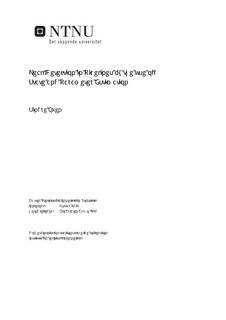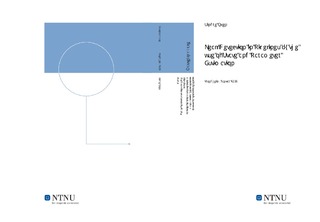| dc.description.abstract | A model based estimation process is implemented in simulation of a transmissionline for the purpose of leak detection. The model has one inlet, one branch and twooutlets. The objective of this thesis is aimed at determining, through simulation results,the effectiveness of the Kalman Filter for leak detection in a pipeline network.Water distribution systems often contain a large amount of unknown losses. Themagnitude of the water loss range from 10 to over 50 percent of the total waterpumped. Water leaks and losses lead to an unnecessary increase in energy usedto pump water to users, which means higher costs for the providers and thus thecustomers. Our increasing population and the necessity and limited availability ofwater will, and are already causing problems, so it is obvious that more controlefforts need to be implemented on these systems. Moreover, leaks that are not consideredto be major faults tend to go unnoticed, which in total add up to a lot ofwater loss.The work done in this thesis may also be relevant for the petroleum industry, astransportation of oil and gas also face many of the same problems as the waterdistribution industry. One should also note that the environmental impact of leaksin oil pipes are bigger than those in water pipes.The leak detection process used in this thesis is model based. A model of a transmissionline with a branch and two outlets is derived from two basic partial differentialequations describing mass and momentum balances for a hydraulic transmission line.Simulations are run , and when the system is in its steady state, a leak is introduced.Flow and pressure at all three extremes are used as inputs to the Kalman Filter.The likelyhood of two leaks occuring simultaneously is low, so only one leak will beexpected at a time.Localization of the leaks are not studied, only the detecton and the magnitude.It is shown that a Kalman Filter can be used as a detection method in this systemto a certain degree. The changes caused by the pressure change is noticable when aleak occurs in a large scale system, even if the leak is very small. The speed of theKalman Filter proved to be a problem area, as some of the estimated states useda long time to reach its final value. More satisfying results may be found throughmore rigorous testing, improvements in the model itself, and changes to the tuningparameters in the Kalman Filter. | nb_NO |

